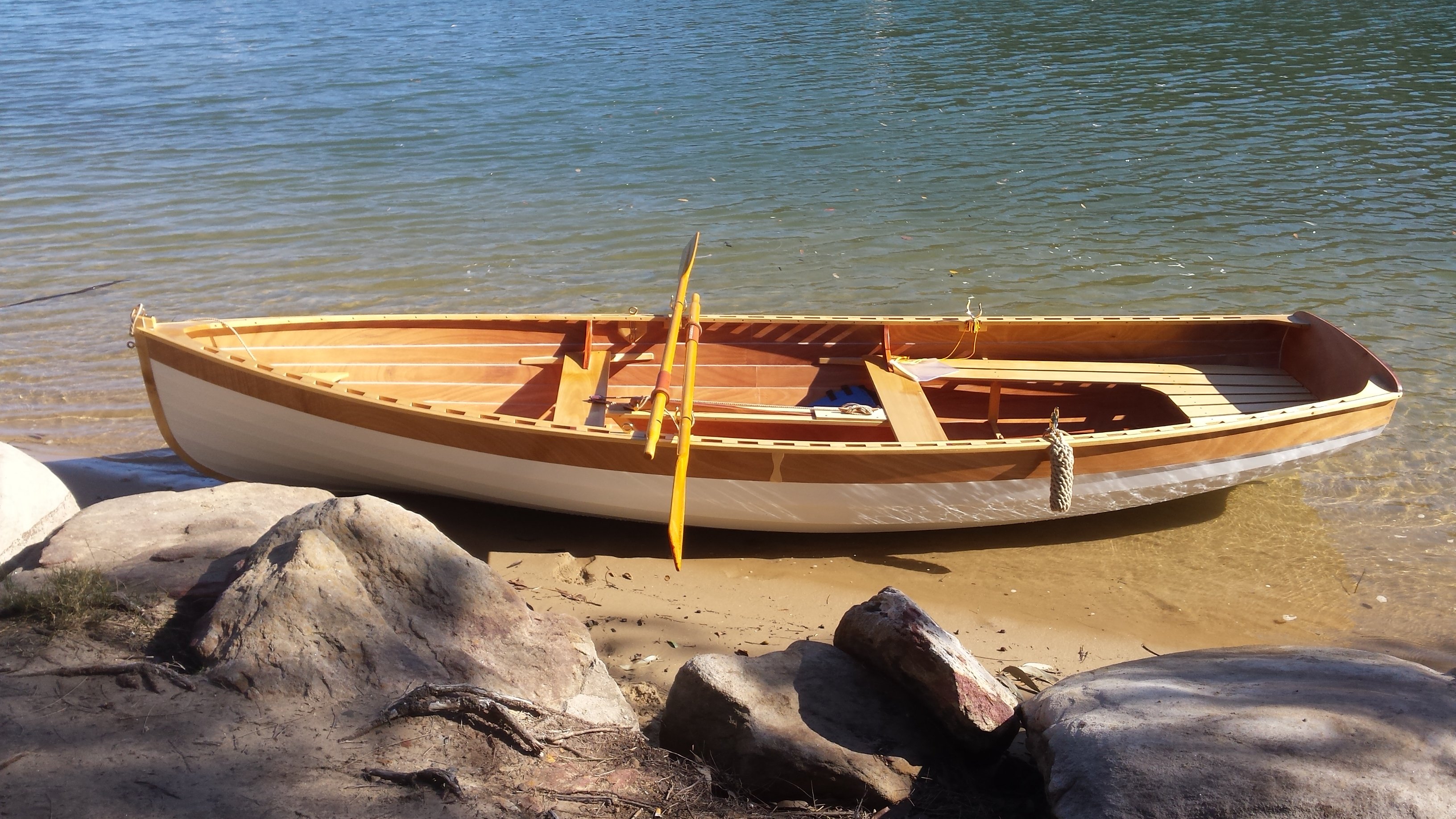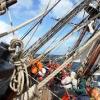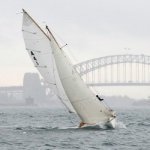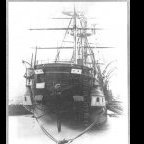MORE HANDBOOKS ARE ON THEIR WAY! We will let you know when they get here.
×
-
Posts
1,281 -
Joined
-
Last visited
Reputation Activity
-
 Bedford reacted to vaddoc in Hercules by vaddoc - 1:64 - Steam Tugboat
Bedford reacted to vaddoc in Hercules by vaddoc - 1:64 - Steam Tugboat
Thanks Mark and Jim and all that hit the like button.
A bit too early for an update but It's exciting seeing the shape of the hull slowly emerging.
Boats are such beautiful things!
Vaddoc
-
 Bedford reacted to vaddoc in Hercules by vaddoc - 1:64 - Steam Tugboat
Bedford reacted to vaddoc in Hercules by vaddoc - 1:64 - Steam Tugboat
Time for a wee update!
I did lots of work but have little to show, planking is a slow, labour intensive process. I need to cut the plank patterns for each side separately as the port and starboard planks are very close but not identical. I try to fit the edges reasonably close but I am not too fussed, with a bit of sanding and filler it will be fine. Also, I really should have hollowed the planks where they meet the frames at the turn of the bilge but it will be fine. The plank scarfing is a bit wonky but this will also be ok with some sanding.
I realised that to progress further I had to mark all the remaining planks. One of the aft frames looked (and still looks) a bit wrong so I cut some of it off and overall I am not sure how the stern will end up, so some head scratching there is needed. Also, the sheer plank will continue as gunwales so this also needs some more thought.
I am not sure I have enough pear to finish the planking, I ve managed so far not to waste any wood but today I made two wrong planks - this is a lot of waste!
5 planks are in and the run of all the remaining planks marked. Of course the width of the planks is all way off scale but Hercules had a metal hull and I just want to plank the hull - there is no reason though not to do it nicely!
I think the planks so far run reasonably fair. The sheer also looks ok.
Please do excuse the huge mess in the yard!
Now, I may have a £200 gift card to spend and some money to add to it - I may get a milling machine! (Proxxon MF-70?)
Best wishes to all
Vaddoc
-
 Bedford reacted to Mark Pearse in Ranger type yacht by Mark Pearse - 1:12 - SMALL
Bedford reacted to Mark Pearse in Ranger type yacht by Mark Pearse - 1:12 - SMALL
Yes, the adaptability of English is an enjoyable part of the language. There's some really nice colourful language in the book I'm currently reading: "The Shipping News", I'm not sure how close to you it's set. A v enjoyable book.
And, the gratings did turn out better than I had hoped, not having done them before.
Thanks,
-
 Bedford reacted to Valeriy V in Libertad 1925 by Valeriy V - Scale 1:100 - Spanish Type F Light Cruiser
Bedford reacted to Valeriy V in Libertad 1925 by Valeriy V - Scale 1:100 - Spanish Type F Light Cruiser
The cruiser's hull after applying the preliminary primer.
-
 Bedford reacted to Valeriy V in Libertad 1925 by Valeriy V - Scale 1:100 - Spanish Type F Light Cruiser
Bedford reacted to Valeriy V in Libertad 1925 by Valeriy V - Scale 1:100 - Spanish Type F Light Cruiser
The hull of a cruiser with openings for portholes.
-
 Bedford reacted to Jim Lad in Herzogin Cecilie 1902 by Jim Lad - Four Masted Barque
Bedford reacted to Jim Lad in Herzogin Cecilie 1902 by Jim Lad - Four Masted Barque
A landmark day (of sorts) on Monday, with half the square sails now rigged (apart from their braces, of course). I should get the main lower topgallant crossed either Friday or Monday, so she's looking more and more like a sailing ship and less like an abandoned wreck!
John
-
 Bedford reacted to wefalck in Pomeranian Rahschlup 1846 by wefalck – 1/160 scale – single-masted Baltic trading vessel
Bedford reacted to wefalck in Pomeranian Rahschlup 1846 by wefalck – 1/160 scale – single-masted Baltic trading vessel
Crew companionway
The deck of the Rahschlup was flush, no raised quarterdeck or any deckhouses as such. Only companionways gave access to the crew quarters and the after cabin respectively. All in all, a very spartanic arrangement.
Companionway on the reconstruction project for the galeas FÖRLIG WIND, Skeppsholmen, Stockholm (https://www.arbeitskreis-historischer-schiffbau.de/mitglieder/ontour/bootsbauplatz-skeppsholmen/)
The length of the companionways and of the hatches can be taken from the side elevation drawing, but their width has to be inferred from common practice of the time. Likewise, their construction had to be inspired by photographs of appropriate restoration projects. A typical construction method seems to have been panelled sides. Other examples include simple vertical or horizontal staves that fill the space between the corner posts. Two narrow doors give access, together with a sliding roof section. The rails on which this cover slides seems to have been of varying degrees of complexity.
I usually built such companionways around a core in Plexiglas that has been milled to shape. For this project, however, I wanted to show them open with some interior details, so that a construction method somewhat closer to the prototype had to be chosen.
The different parts were drawn and cut out with the laser-cutter from 0.1 thick Canson paper. Each side was laminated from three layers for the actual companionway and two more layers for the coamings using Zapon varnish. The roof and the sliding cover were built up from two layers. The sliding rails were constructed from narrow laser-cut strips. The doors are also built up from three layers.
Unlike on the prototype, the companionways and ‘coamings’ reach down to a horizontal layer in the hull in order to provide a reference for their height above the deck, when installed.
As with all such parts, they may look a bit rough in the close-up pictures, but once painted and from a normal viewing distance they look very good (hopefully …).
To be continued …
-
 Bedford reacted to Mark Pearse in Ranger type yacht by Mark Pearse - 1:12 - SMALL
Bedford reacted to Mark Pearse in Ranger type yacht by Mark Pearse - 1:12 - SMALL
thank you all,
I've started on the cockpit seating & some other details that on the actual boat are unfinished teak, ie: greyed from natural weathering. I was dreading this work, it's got a lot of detail & also getting the weathering right. A few weeks ago I started researching weathering techniques on this forum & the web generally, some techniques are fairly simple but for one reason or another I remained unconvinced that it would be straightforward. The tests I did included rough sanding & scuffing the surface of the timber; dipping in diluted black paint, then with white added, then with beige added; wiping the surface of the timber strips with undiluted paints, diluted paints, on scuffed surfaces....The good news is that the most simple of the techniques seemed to work the best - essentially just wiping unscuffed timber with black or grey undiluted paint. Now that I was confident there could be a reasonable result I started working on the cockpit seating.
The technique was to build it on the model, but not yet gluing it on. The loose strip at the forwards edge is a border strip, to be fitted later.
And from the underside, you can see the downturned edge to the cockpit footwell, the edge piece is an L for the visible edge thickness:
And the lazarette hatch underway. You can see a piece of plain plastic sheet underneath, that's how I've been able to glue in situ. I think it's easier to make something accurately to size when you're building off assembled pieces rather than guessing from loose pieces.
A shot of the actual cockpit, when you look carefully the colour still has some natural warmth, it's not a pure grey. Below that are some of the weathering samples. Most of them are too heavy & too dark. Most also obscure too much of the timber colour, the best ones allow that natural colour through a bit.
The single strip 2nd from the right is getting close, needs a little more tweaking but I'm happy that I can do something satisfactory. The caulking will be done with an artist grade 0.5mm ink felt tip pen.
-
 Bedford reacted to Jim Lad in Herzogin Cecilie 1902 by Jim Lad - Four Masted Barque
Bedford reacted to Jim Lad in Herzogin Cecilie 1902 by Jim Lad - Four Masted Barque
So we continue. As you will see from the images, i now have two yards crossed on the main. The main yard is fully rigged whilst the lower topsails till needs a little more work on in. The starboard lower fore ratlines are
also close to completion, needing just a few more battens near the top to finish off. while hard to see in the image, the battens are quite visible on the model itself, but not jarringly so. After all, they're are a minor detail.
I'll finish of the lower topsail yard tomorrow and prepare the mast for the upper topsail and then continue with the ratlines on the fore.
John
-
 Bedford reacted to vaddoc in Hercules by vaddoc - 1:64 - Steam Tugboat
Bedford reacted to vaddoc in Hercules by vaddoc - 1:64 - Steam Tugboat
Thank you all for your likes and replies and taking the time to visit.
@Jim Lad Jim it really makes a big difference, having the extra real estate around the saw but figuring out how to make the bench was a pain!
@Bedford I could and should have used 0.8 ply but I had already finished the CAD design, it would need more frames and most importantly true 0.8 mm seems to have disappeared - most of it apparently comes from Russia. Good to know though that Scissors can cut it cleanly - never thought of it. Def one to remember.
Now, lets talk Planking!
I cut both garboards and steamed them in place. I ve never steamed pear wood but it responded superbly. I used my steam box to heat the planks - worked really well.
I then scarfed the ends and secured in place with screws, The ends however had to be glued as the hull is not thick enough. Due to uneven surfaces I used epoxy - very messy solution but I do not think there is another. I think they came out alright!
I really like planking. For this boat, I did not really spend much time planning, I just eyeballed it a bit. I have only marked half of the hull but I feel pretty
confident. So let me share my method of spilling planks.
First I use 1mm (or 1.5 I am not sure) cardboard to make a pattern. I am only interested in the side of the plank that meets the plank already installed.
The foreword part of the plank has a lot of twist along its axis.
To get the correct shape of the edge, cut a strip of cardboard roughly the correct shape and run dividers along the edge of the plank already installed.
Then cut along the line with a knife
Fitting the pattern, it is a bit off - mark the high spots
Lightly sand the high spots, fit again, sand again etc. Now it fits fine
Connect with the previous plank using cardboard and glue and move on to next segment.
For the aft segment, the process is repeated - it just happened my rough cut pattern was spot on here!
The plank is now completed - the upper edge that is
Usually, I would just cut the plank as a single very long one but I would like to reduce wastage of wood.
So now lets cut the individual segments. First we transfer the shape of the upper edge to wood, making sure we mark the positions of the frames.
Then we measure the distances from edge of previous plank to line on frame and transfer over to wood
Using a baten, we connect the marks making sure the line is fair
Our plank segment is ready
Next cut the plank, test fit, mark and sand any high spots, fit again etc. Later on we will need to also take into account bevels and also curvature of frames - either sand concave the inner surface of planks or sand flat the frames.
Same process for middle and aft segments
All segments are ready, just the scarfs are needed.
The plank on the other side needs to be again cut individually as it is a close but not exact fit.
On a different boat I would have spent more time arranging the run of the planks but for Hercules, I think this will work well - the plank shape so far does not seem horrible.
I hope this was interesting!
Till next time
Vaddoc
-
 Bedford got a reaction from FriedClams in Hercules by vaddoc - 1:64 - Steam Tugboat
Bedford got a reaction from FriedClams in Hercules by vaddoc - 1:64 - Steam Tugboat
This might be useless info in this case since you don't want to buy new stock but something to keep in mind. When I made the 1:8 scale Tammie Norrie I used 0.8mm birch ply for the strakes. You can cut it with a decent pair of scissors and get perfect edges.
That model suffered a warped backbone too but it's the fix that matters.
-
 Bedford reacted to Jim Lad in Herzogin Cecilie 1902 by Jim Lad - Four Masted Barque
Bedford reacted to Jim Lad in Herzogin Cecilie 1902 by Jim Lad - Four Masted Barque
Phil, I thought to myself a few times, "Don't worry about it - no-one will ever know." But then I kept telling myself that I'd Know!!
John
-
 Bedford got a reaction from Mark Pearse in Ranger type yacht by Mark Pearse - 1:12 - SMALL
Bedford got a reaction from Mark Pearse in Ranger type yacht by Mark Pearse - 1:12 - SMALL
Another beautiful Ranger there Mark, she's coming together very nicely, but then I've seen your other one so no surprises there!
-
 Bedford got a reaction from Jack12477 in Ranger type yacht by Mark Pearse - 1:12 - SMALL
Bedford got a reaction from Jack12477 in Ranger type yacht by Mark Pearse - 1:12 - SMALL
Another beautiful Ranger there Mark, she's coming together very nicely, but then I've seen your other one so no surprises there!
-
 Bedford reacted to Mark Pearse in Ranger type yacht by Mark Pearse - 1:12 - SMALL
Bedford reacted to Mark Pearse in Ranger type yacht by Mark Pearse - 1:12 - SMALL
I haven't posted for a while, but I'm back working on the model. The sailing trip in Tassie is posted in another part of this forum, linked below if you're interested.
Back to the model, I've been working on the cockpit area, starting with the toe rails, just visible on the upper deck forwards of the cockpit. The toe rails were delicate, about 1.5 x 2.5mm & maybe 300mm long. Then the timber strips that visually complete the hull step-down alongside the cockpit. The timber is Blackbutt, from the same floorboard offcut I used for the gunwales & sponsons.
Then the small cupped strip aft of the previous photo, to fit in this curve:
I had a piece of round acrylic tube about the right diameter:
Then some more sanding:
I picked up an error in that strip of side decks, on one side I'd clearly been daydreaming while sanding....so I added on a filler piece of timber, then undercoat, paint etc.:
I painted the two-tone deck (or scuppers area) around the cockpit seating. On the yacht it's painted in a more modern style, where there's an edge strip with the deck paint set in, & in different colours. Tamiya have masking tape in 2mm width, which helped get a constant gap, plus some 6mm masking tape to help stop overpainting onto the adjoining finished paint.
Then glueing the timber strips on - as per the previous timber, I really prefer shellac for scale varnish, the thin viscosity helps the finish to look right at scale. Not to say you can't get other finishes to look right at scale, but this works for me & it dries quickly...& I like the way you can matt it with steel wool & gradually buff it back to satin with some cotton rag.
Then carefully fitting the little curved pieces...
And one side done.
Then both. Some details fixes will be required to the paint, but I'll do that all in one go later.
The deck will get painted soon, so I started shellacking the cockpit stormboards, made earlier.
I'll paint the deck next I think, then start on the weathered teak cockpit seats & other details.
Thanks everyone
-
 Bedford got a reaction from FriedClams in Herzogin Cecilie 1902 by Jim Lad - Four Masted Barque
Bedford got a reaction from FriedClams in Herzogin Cecilie 1902 by Jim Lad - Four Masted Barque
Ah yes, the mindless tedium of ratlines!
She's coming up very nicely John
-
 Bedford reacted to Jim Lad in Herzogin Cecilie 1902 by Jim Lad - Four Masted Barque
Bedford reacted to Jim Lad in Herzogin Cecilie 1902 by Jim Lad - Four Masted Barque
Thanks, mate. Ratlines on the 'Duchess' are made more interesting by the fact that she has 6 staves across the shrouds before the rope ratlines begin. Lashing them to the shrouds is such fun!
John
-
 Bedford got a reaction from Keith Black in Herzogin Cecilie 1902 by Jim Lad - Four Masted Barque
Bedford got a reaction from Keith Black in Herzogin Cecilie 1902 by Jim Lad - Four Masted Barque
Ah yes, the mindless tedium of ratlines!
She's coming up very nicely John
-
 Bedford reacted to Jim Lad in Herzogin Cecilie 1902 by Jim Lad - Four Masted Barque
Bedford reacted to Jim Lad in Herzogin Cecilie 1902 by Jim Lad - Four Masted Barque
Things are progressing. I now have the mizzen staysails rigged and the fore topgallant and royal braces rigged up through their lead blocks ready to attach to their yards. This was necessary as I needed to get the brace whips rigged before I start on the square sails on the mainmast. I've also started on the fore ratlines. This will be an intermittent job in between the rigging of the mainmast, but at least I've made a start on them.
John
-
 Bedford reacted to Valeriy V in Libertad 1925 by Valeriy V - Scale 1:100 - Spanish Type F Light Cruiser
Bedford reacted to Valeriy V in Libertad 1925 by Valeriy V - Scale 1:100 - Spanish Type F Light Cruiser
Phil, when soldering is done with silver solder, there is no need to worry about the structure being destroyed. This soldering can withstand the heaviest loads.
-
 Bedford reacted to Valeriy V in Libertad 1925 by Valeriy V - Scale 1:100 - Spanish Type F Light Cruiser
Bedford reacted to Valeriy V in Libertad 1925 by Valeriy V - Scale 1:100 - Spanish Type F Light Cruiser
The entire propeller-rudder system is pre-installed on the cruisers hull.
The blades will be twisted and the propellers will be fully polished later, before final installation.
-
 Bedford reacted to wefalck in Pomeranian Rahschlup 1846 by wefalck – 1/160 scale – single-masted Baltic trading vessel
Bedford reacted to wefalck in Pomeranian Rahschlup 1846 by wefalck – 1/160 scale – single-masted Baltic trading vessel
Thanks for the 'likes' !
***********************
Fitting the rails
The rails are 0.75 mm x 1.50 mm styrene strips on top of the bulwark and a 0.75 mm x 2.00 mm strip over the stern. The edges of the strips are rounded.
To this end I cut a scraper from a piece of razor-blade which is held in a short pin-vice. The strip is held in a simple jig made from cardboard. Strips of cardboard were cut with clean and vertical edges and glued to a cardboard-base so that styrene strips of 0.25 mm, 0.50, and 0.75 mm thickness can be wedged into the resulting notch, holding it straight and vertical.
In this way a clean and uniform profile of the styrene strip can be achieved quickly.
The styrene strips then were pre-bend, holding them lightly in round-nosed pliers and by ‘massaging’ them around my thumb to make them conform to the sheer-line as closely as possible. They then were glued onto the stanchions and the top bulwark strake using styrene-cement.
As can be seen from the cross-section shown in the previous post, the profile of the rail may be even more sophisticated with some cornice planed in. I simulated this my lacquering a 0.1 mm copper wire into the outboard corner under the rail.
The next step will be puttying up any small gaps that have developed during the planking process.
As one can see on the pictures, I also started to work on the deck by making a paper template for it.
To be continued …
-
 Bedford reacted to Jim Lad in Herzogin Cecilie 1902 by Jim Lad - Four Masted Barque
Bedford reacted to Jim Lad in Herzogin Cecilie 1902 by Jim Lad - Four Masted Barque
A big day (for me, at least) at the museum on Friday. That was the day that I finally finished fitting all the rope coils at the foremast and could get the well deck boats fitted along with the well deck gangway. It was a bit of a struggle to get it all in around the running rigging, but it finally fitted beautifully!
John
-
 Bedford reacted to Jim Lad in Herzogin Cecilie 1902 by Jim Lad - Four Masted Barque
Bedford reacted to Jim Lad in Herzogin Cecilie 1902 by Jim Lad - Four Masted Barque
I don't consider it hijacked, Pat!
It's really sad that Victoria, with its rich maritime heritage, has to rely on privately run museums to conserve and display that heritage.
By the way, we have a 'Couta boat on display in the floating collection at the ANMM - couldn't get much more Victorian than that!
John
-
 Bedford reacted to BANYAN in Herzogin Cecilie 1902 by Jim Lad - Four Masted Barque
Bedford reacted to BANYAN in Herzogin Cecilie 1902 by Jim Lad - Four Masted Barque
Very nice work John, she is coming along very well, and I should add congratulations on getting her to the standard the Museum has accepted it.
As to ownership/part of collection, I have come across this conundrum down here in Melbourne also. Large donations of models from other organisations/authorities are passed along, but not actually part of the new owners actual collection. Usually they only act as their custodian - we have an area (tunnels really) where there a load of models collecting dust that have not even been listed/identified yet alone curated. Victoria still remains the only State in Australia without an official 'Maritime Museum' - sorry I'll get off my soap box now - sorry to hijack your thread John.
cheers
Pat





